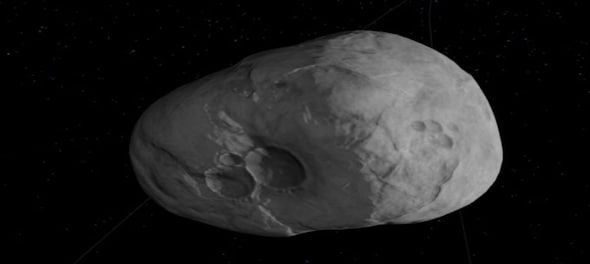
The US National Aeronautics and Space Administration is currently tracking a newly discovered asteroid that may crash into Earth 23 years later. The 165-foot diameter asteroid 2023 DW has an approximately 1-in-600 chance of hitting our planet on Valentine’s Day in 2046.
The probability of that happening is still very small, according to the space agency’s asteroid Planetary Defence Coordination Office. The exact chances of the asteroid hitting the planet are constantly recalculated, especially in the first few weeks after the discovery.
“We've been tracking a new asteroid named 2023 DW that has a very small chance of impacting Earth in 2046. Often when new objects are first discovered, it takes several weeks of data to reduce the uncertainties and adequately predict their orbits years into the future,” NASA tweeted.
We've been tracking a new asteroid named 2023 DW that has a very small chance of impacting Earth in 2046. Often when new objects are first discovered, it takes several weeks of data to reduce the uncertainties and adequately predict their orbits years into the future. (1/2) pic.twitter.com/SaLC0AUSdP
— NASA Asteroid Watch (@AsteroidWatch) March 7, 2023
Orbit analysts will continue to monitor asteroid 2023 DW and update predictions as more data comes in, the agency added.
ALSO READ |
The asteroid is also on the top of the risk list developed by the European Space Agency for near-Earth objects with a 1-in-625 chance of impact. There are less than 1,500 objects in the agency’s risk list which keeps a track of objects which have a non-zero chance of hitting the Earth.
The 165-foot wide asteroid is far from the size of the 12-km wide asteroid whose cataclysmic impact on Earth wiped out dinosaurs along with 75 percent of all animal and plant life on the planet. But the asteroid is still large enough to cause serious damage especially if it impacts near densely populated areas like a large city.
While asteroids will always remain a distant but existential threat to life on Earth, NASA’s recent success in the Double Asteroid Redirection Test (DART) mission has given a new way to deal with possible asteroid threats. The mission highlighted the fact that NASA could change the trajectory of deadly asteroids on a collision course with the Earth by ramming it with a satellite, which would slow down or throw off the trajectory of the asteroid just enough that it would miss the planet.
(Edited by : Sudarsanan Mani)
Check out our in-depth Market Coverage, Business News & get real-time Stock Market Updates on CNBC-TV18. Also, Watch our channels CNBC-TV18, CNBC Awaaz and CNBC Bajar Live on-the-go!


Supreme Court dismisses plea seeking postponement of CA exams; details here
Apr 29, 2024 2:29 PM
Just 8% women candidates contested first two phases of Lok Sabha polls
Apr 29, 2024 12:00 PM
The sexual assault case against Prajwal Revanna — here's what we know so far
Apr 29, 2024 11:36 AM
Repolling underway at one polling booth in Chamarajanagar LS segment in Karnataka
Apr 29, 2024 10:32 AM

